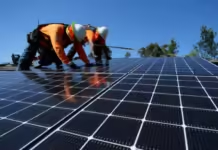Originally posted in The Financial Express on 27 February 2022

Over the past decade energy security has emerged as one of the most critical issues within the South Asian region. Careful monitoring has indicated that disruption of power and other forms of energy supply are at times resulting in serious crisis affecting both human requirements (food, livelihood, employment and economy) and national security (environment, international trade communications, transport and all other services).
The incapacity of being able to provide the increasing industrial and other commercial needs are adversely affecting not only productive activities and social development but also investment climate. This scenario is being further aggravated by financial, structural and institutional problems.
It has also been noted that the per capita commercial energy consumption in the region has increased but continues to be quite low. This connotes the potentials for more energy consumption. At the same time, persistent shortage of energy has been a major factor in keeping the region within comparatively low growth symmetry.
The traditional sources of energy in the rural areas of the region are mostly firewood, animal dung, crop residues etc. They are still the major energy sources to the larger rural population in most of the South Asian countries.
This scenario is adversely affecting the sustainability of the natural resources including that of forests. It is also creating a critical dimension pertaining to the unstable distribution of the available energy both within a country and across the region and generating a mostly adverse impact of poor power quality on economic activities.
Availability of energy — renewable or otherwise — can change the quality of life and work substantially. This also helps in the generation of rural employment opportunities through the traditional handicrafts industry and in motivating people. This also helps to retard rural-urban migration to some extent.
However, analysts have also pointed out that both accessibility and affordability remain critical in rural areas. It must not be forgotten that a significant portion of the society still does not have access to modern sources of energy due to physical inaccessibility and affordability.
There has been a remarkable increase in the demand for power in South Asia because of rapidly increasing domestic demand on account of changing needs of the consumers and the emphasis on the power driven industrialisation particularly in the aftermath of the liberalised economic regimes in most of the countries in the region.
This matrix within South Asian countries has remained in an awkward state for many years because of policy makers being forced to choose between social objective of power distribution and its commercial use-based economic growth. It needs to be noted here however that in Bangladesh the pattern and composition of energy availability and consumption are undergoing significant changes mainly because of the increasing exploitation of hitherto unharnessed natural resources including hydel resources, renewable energy and natural gas. There has been some movement forward in Nepal and Bhutan in the hydel sector and this has opened up a promising scope in the arena of regional cooperation and integration. It also needs to be remembered in this context that the possibility of offshore gas reserves in Bangladesh has also opened another window of opportunity for the SAARC region in the energy field. Over the long term, Hydroelectricity and Gas energy resources can substitute for those energy resources which damage the environment.
In this context one is reminded of a seminar held in Dhaka in May 2004, where Professor Amarta Sen, pointed out that the possibility of power purchase has opened new vistas of cooperation. It was explained that cross border power trade could inter alia lead to i) effective utilisation of natural resources, ii) increase in reliability of power supply, iii) mutual support during contingencies to the economy in operation, iv) large-scale transformation in the sectors contributing to economic growth, and v) act as the single most effective confidence building measure through the participation of multiple stakeholders.
Arunoday Mukharji in October, 2021 highlighted some interesting aspects related to energy consumption and availability in the context of India. It was pointed out that India is on the brink of an unprecedented power crisis.
More than half of the country’s 135 coal-fired power plants are apparently running on fumes — as coal stocks run critically low. In a country where 70 per cent of the electricity is generated using coal, this is seen as a major cause for concern as it threatens to derail India’s post-pandemic economic recovery.
Apparently, this crisis has been evolving for nearly a year. As India’s economy picked up after the deadly second wave of Covid-19, demand for power also rose sharply. Power consumption also has jumped by almost 17 per cent, compared to the same period in 2019.
At the same time global coal prices have increased by nearly 40 per cent and India’s imports have consequently fallen to a two-year low. It may be noted here that India is the world’s second largest importer of coal despite also being home to the fourth largest coal reserves in the world. Power plants that usually rely on imports are now heavily dependent on Indian coal, adding further pressure to already stretched domestic supplies.
It is understood that India’s Power Ministry is trying its best to resolve the problem but is facing many challenges. Ms Zohra Chatterji, the former Chief of Coal India Limited, a state-run enterprise responsible for 80 per cent of the country’s coal supply, has remarked in this regard that “Electricity powers everything, so the entire manufacturing sector — cement, steel, construction — everything gets impacted once there is a coal shortage.” She has also called the current situation a “wake-up call for India” and underlined that the relevant authorities need to understand that time has come to reduce its over-dependence on coal and more aggressively pursue a renewable energy strategy. One presumes that this will be consistent with what has been highlighted last year during the Climate Conference in Glasgow, UK. Experts over there had advocated a mix of coal and other clean sources of energy as one possible long-term solution. This format could possibly be taken forward through strategic cooperation within the South Asian paradigm.
The major energy issue facing South Asian nations today is rapidly rising energy demand coupled with increasingly inadequate energy supplies. Right now, most of South Asia is grappling with energy shortfalls, usually in the form of frequent, costly and widespread electricity outages. Given this situation, and in particular its potential economic and political ramifications, improving the supply of energy in general and electricity in particular has become an important priority of national and local governments.
Consequently, to accomplish this goal, the countries of South Asia are looking towards diversifying traditional energy supply sources (and expanding the use of indigenous energy resources), promoting additional foreign investment for energy infrastructure development, improving energy efficiency, reforming and privatizing energy sectors, and promoting and expanding regional energy trade and investment.
South Asia, it needs to be remembered, has a very small percentage of world supply of oil and natural gas. As a result the Middle East has become the primary source of South Asian energy imports. South Asia has gone forward in energy production in the last ten years as compared to 2001 when South Asia generated only 626 billion kilowatt hours (Bkwh) of electricity.
Energy analysts have made careful research about the strategic perspectives related to energy constraints and challenges that exist within the South Asia and have come up with the following:
a) Issue of energy cooperation is inextricably linked with that of trade. In the case of South Asia, it has been observed that none of the countries has enough traditional energy resources to trade with other countries. However, as stated earlier, there are discussions between some SAARC countries- namely, Bangladesh, India, Bhutan and Nepal for the development of a regional electricity grid;
b) However, energy cooperation through the SAARC process has become difficult due to the persisting animosity between India and Pakistan; and
c) Besides political reasons, there also exists some problems for South Asian countries, financial and legal in nature. The governments in these countries do not have enough financial capability to fund energy projects. At the same time, due to the political and economic volatility, foreign private investors are somewhat reluctant in investing in energy projects.
It would be fitting to conclude by recalling the observations made with regard to this energy matrix by energy specialist Barry Worthington. He remarked that “Specialists have focused on the three E’s of energy policy, that is, Energy, Economy and Environment since the early 1970s. However, in this 21st century, Security must also be added. Energy policy options must be weighed and evaluated considering specific core principles.”
One needs to include within this context the following dimensions diversity of energy supplies, competitive markets and economic efficiency, particularly in terms of balancing global supply and demand at the lowest cost for consumers, technological innovations including energy security and environment protection, cooperation between the various forms and tiers of industry and government and finally the potential of interactive engagement between the private and public sectors.
There needs to be a coordinated effort in this regard. This is the only way we can facilitate our socio-economic movement forward in the coming future.
Muhammad Zamir, a former Ambassador, is an analyst specialized in foreign affairs, right to information and good governance.






